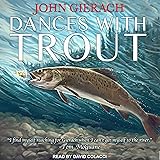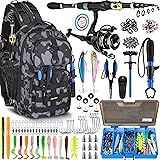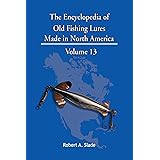Welcome back, fellow anglers! If you’ve been watching the insightful video above, you’re already on your way to mastering some fantastic trout fishing tactics for lakes and ponds. As our expert angler demonstrates, versatility is truly the name of the game when targeting trout. Conditions change, fish preferences shift, and having a diverse arsenal of techniques ensures you’re always ready to entice a bite.
Far too many anglers head to the water with just one trick up their sleeve, and when that trick doesn’t produce, frustration often sets in. This comprehensive guide builds upon the valuable lessons from the video, delving deeper into the “why” and “how” behind each method. We’ll equip you with the knowledge to adapt, refine your approach, and ultimately, enhance your success rate on any given day.
Mastering Trout Fishing Tactics in Lakes & Ponds
Fishing for trout in tranquil lakes and serene ponds offers a unique challenge and immense reward. Unlike rivers where current dictates much of the fish behavior, still waters require different strategies to locate and engage trout. The three core trout fishing tactics discussed here — casting spinners, fishing bait under a float, and bottom-fishing with Power Bait — are foundational methods that every serious trout angler should have in their repertoire. We’ll explore each in detail, ensuring you understand not just the mechanics, but also the nuances that lead to consistent catches.
1. The Dynamic Art of Casting Spinners for Trout
Casting spinners is arguably one of the most interactive and exciting ways to catch trout. The allure of a spinning blade, creating flash and vibration, can trigger aggressive strikes from even the most hesitant fish. Our video highlights this method as a top choice, and for good reason: it allows you to cover vast amounts of water and actively seek out feeding trout. This technique is particularly effective when trout are actively chasing baitfish or insects near the surface or in the mid-water column.
Gear Setup for Optimal Spinner Performance
Precision in your gear setup dramatically impacts your casting distance and presentation. The rod, reel, and line are a team working in unison to get your spinner where the fish are.
- **Rod:** A 7.5-foot rod, such as the Okuma Salilo 4-10 lb rating, is ideal. The extended length provides excellent casting distance, crucial for reaching those distant feeding trout that are often rolling in the middle of a lake. Its flexible tip also allows for casting lighter spinners, ensuring your presentation is subtle and appealing.
- **Reel:** A C30 (or 300/3000 series) Okuma Kaimar reel balances perfectly with such a rod. This size offers enough line capacity and a smooth drag system, essential for fighting spirited trout without breaking your line.
- **Main Line:** 20-pound Addicted Enforcer braided line, as recommended, might seem heavy for trout, but it offers significant advantages. Its strength minimizes tangles, especially with the constant rotation of a spinner, and it sails smoothly through rod guides for maximum casting efficiency. Braided line’s lack of stretch also provides superior sensitivity, allowing you to feel even the slightest tap.
- **Bumper/Leader:** A 6 to 10-foot (or even 3-foot) fluorocarbon or monofilament leader (6-10 lb test) is critical. Braided line is highly visible to fish, especially in clear lake waters. This transparent “bumper” creates a stealthy connection to your spinner, preventing wary trout from being spooked. Fluorocarbon is often preferred for its near-invisibility underwater and its abrasion resistance.
Mastering Your Knots and Connections
Connecting your braided main line to your fluorocarbon leader requires a strong, streamlined knot. The video mentions several excellent choices:
- **Blood Knot:** A classic choice, known for its strength and slender profile, which minimizes snags through rod guides.
- **Double Uni Knot:** A robust and relatively easy-to-tie knot that offers great line-to-line strength.
- **Alberto Knot:** Often lauded for its high breaking strength and smooth passage through guides, making it a favorite for many anglers.
- **Barrel Swivel:** For those less confident in tying line-to-line knots, a small barrel swivel provides a reliable connection point. Simply tie your braided line to one end and your leader to the other. While it creates a small break in your line’s stealth, it’s a solid, functional alternative.
Selecting the Perfect Spinner
The variety of spinners available is vast, but having a few proven types and colors on hand is crucial. Different conditions call for different approaches.
- **Panther Martin (Size 6):** This spinner is a perennial favorite, particularly the size 6. Its heavier weight allows for exceptional casting distance, and its unique Vibrax blade creates a distinct vibration and flash in the water, irresistible to many trout.
- **Rooster Tail:** Extremely popular worldwide, Rooster Tails offer unparalleled versatility in sizes and colors. Imagine if you only had one color; you might miss out on a prime bite! It’s wise to carry a selection of light (silver, white), dark (black, brown), and vibrant (chartreuse, orange) body colors, along with different blade finishes (silver, gold, painted) to match water clarity and light conditions.
- **Mepps Spinners:** These classic, often all-silver spinners are incredibly effective. Mepps come in various blade shapes (e.g., Aglia, Comet, Black Fury), each offering a slightly different action and vibration profile in the water.
The key is variety. On bright, clear days, natural colors and silver blades might excel. In murky water or low light, brighter colors or gold blades can offer better visibility. Experimentation is always rewarded.
Effective Spinner Fishing Techniques
Once your gear is ready, it’s time to put your spinner to work.
- **Locate the Fish:** Begin by observing the lake. If trout are “rolling” or visibly breaking the surface, focus your casts there. If not, adopt a systematic approach: cast in a fan pattern, covering an area meticulously, or work your way around the shore in a clockwise or counter-clockwise direction. Make each subsequent cast 20-30 feet from the previous one to cover new water.
- **Retrieve Speed is Key:** This is where active experimentation comes in. Some days, trout want a fast, erratic retrieve that mimics a fleeing baitfish. Other days, a slower, more deliberate retrieve that gives them more time to react is preferred. Start with a moderate retrieve and adjust. Imagine if you reeled too fast and missed a bite because the fish couldn’t catch up; or too slow, and it lost interest. Varying your speed until you find what the fish prefer is essential.
- **Multi-Rod Approach (Check Regulations!):** Many lakes and ponds allow anglers to fish with multiple rods. As demonstrated in the video, this can be incredibly efficient. While one rod is set up for bait fishing (like Power Bait, discussed next), you can actively cast and retrieve your spinner with another, maximizing your chances.
2. Precision Bait Fishing with a Trout Float
Fishing bait under a float is a time-honored and incredibly effective method, especially when trout are feeding at a specific depth or when you need a more passive approach. It excels when fish are less aggressive or when you want to keep your bait suspended just above submerged vegetation or the lake bottom. The visual strike indication of a bobber disappearing below the surface adds to the excitement.
Essential Float Fishing Gear
This method shares much of the same foundational gear as spinner fishing, making it easy to switch between techniques.
- **Rod, Reel & Main Line:** Utilize the exact same 7.5-foot rod, C30 reel, and 20-pound braided main line with its fluorocarbon or monofilament bumper. The sensitivity of the braid and the casting distance remain advantageous.
- **The Addicted Trout Float:** This is where the setup differs significantly. The Addicted Trout float is designed with adjustability in mind, featuring removable brass weights. This allows you to fine-tune its buoyancy and sensitivity. Removing weights makes the float more sensitive to light bites, a crucial advantage on days when trout are finicky.
- **Rigging the Float:** The float comes with two rubber grommets. First, slide one grommet onto your main line. Thread your line through the two holes on the side of the float, pull it taut, and then slide on the second grommet. Secure the bottom grommet halfway onto the bottom plastic piece of the float, and the top one over the top piece. This design allows you to easily slide the float up and down your line to adjust your bait’s fishing depth, without compromising the line’s integrity.
Leader, Hook & Weight for Perfect Presentation
Beneath your float, the presentation needs to be natural and enticing.
- **Barrel Swivel:** A small barrel swivel connects your main line (or bumper) to your leader. Smaller swivels are less visible and won’t deter wary trout. A simple Fisherman’s knot (or Uni knot) is effective for this connection.
- **Leader:** Attach a 1.5-foot section of 6-pound test fluorocarbon or monofilament as your leader. This length allows your bait to drift naturally and prevents the fish from seeing the more visible main line components.
- **Hook Choice:** A size 4 Addicted Advantage bead hook is recommended for its excellent hooking capabilities. Its design ensures a solid hook set. While other options like Mustad worm hooks with small barbs are available for keeping worms on, the Advantage Bead Hook provides superior performance when a fish bites. Use the same simple Fisherman’s knot to attach it.
- **Split Shot:** A single size 6 split shot is crimped onto your leader, roughly 6-12 inches above your hook. This small weight helps your bait sink quickly to the desired depth and keeps it stable under the float, ensuring it doesn’t drift away too quickly.
The Art of Baiting with Live Worms
Live worms are a classic and highly effective trout bait due to their natural scent and wriggling action.
- **Worm Selection:** When purchasing worms, always check for lively, good-sized specimens. A single dead or unhealthy worm can quickly spoil the rest.
- **Proper Rigging:** Cut a roughly 3-inch section of worm. Thread the cut end onto your hook, running it up as far as possible until it touches the hook’s eye or your finger, then slide it down over the entire hook shank. This ensures the worm remains securely attached, allowing the tail end to wriggle enticingly. Imagine a perfectly presented worm, dancing subtly in the water, irresistibly drawing in curious trout.
Float Fishing Strategy and Hook Set
Casting and presenting your float rig requires a delicate touch.
- **Setting Depth:** Adjust your float’s position on the line to ensure your bait is suspended at the desired depth. A good rule of thumb is to keep the bait a foot or two off the bottom, or just above any visible vegetation. This ensures the trout can easily spot it as they cruise by.
- **Gentle Casting:** Perform a smooth, gentle cast to avoid flinging your worm off the hook. A good cast will result in minimal splashes. If you see more than three splashes, it’s likely your bait has come off, and you should reel in and re-bait.
- **Observation and Patience:** Once cast, lay your rod in a holder or hold it steady, letting your line lay flat on the water. Now, you wait. Watch the float intently.
- **The Soft Hook Set:** When the float dips, dances, or disappears, resist the urge to violently yank the rod. Instead, reel in smoothly until your line becomes tight, then gently lift the rod. This allows the fish to fully take the bait without feeling immediate resistance, resulting in a solid hook set. As the video demonstrates, a panfish might take it, but a trout will often be more decisive.
3. Bottom-Fishing for Trout with Power Bait
Power Bait is a revolutionary bait designed specifically for trout, and fishing it off the bottom is an incredibly productive method, particularly for stocked trout that are often accustomed to pellet feeds. The key to Power Bait’s success is its buoyancy and strong scent, which allows it to float enticingly just off the lakebed, where many trout forage. This “still fishing” technique is often preferred for a more relaxed angling experience.
Power Bait Rigging Essentials
Like the previous methods, the Power Bait setup shares a common foundation, making it easy to integrate into your fishing day.
- **Rod, Reel & Main Line:** Again, the same 7.5-foot rod, C30 reel, 20-pound braided main line, and fluorocarbon/monofilament bumper are perfectly suited.
- **Sliding Weight:** This setup incorporates a half-ounce round weight with a hole through its center. The main line passes freely through this hole. This design is crucial: when a trout takes the bait, the line slides through the weight, meaning the fish feels virtually no resistance. This allows them to fully commit to the bite and swallow the bait, leading to more secure hook sets.
- **Barrel Swivel & Leader:** After the sliding weight, tie on a small barrel swivel using a Fisherman’s knot. To this, attach a 2-foot leader of 6-pound test fluorocarbon or monofilament. The longer leader is vital here because Power Bait floats. This ensures the bait rises a significant distance off the bottom, making it highly visible and accessible to foraging trout, even if there’s submerged vegetation. Imagine your bait getting lost in a patch of weeds if your leader was too short – a two-foot leader gives it the lift it needs.
- **Hook:** A size 4 Addicted Advantage bead hook, attached with a Fisherman’s knot, completes the rig.
Selecting the Right Power Bait
The array of Power Bait options is extensive, varying in color, scent, and form. Having a diverse selection on hand is crucial for adapting to conditions.
- **Types:** Traditional Power Bait dough (rainbow is a classic!), Power Nuggets (less messy, easier to handle), and Power Eggs (come in many colors, very easy to rig). Each has its advantages.
- **Color & Scent:** Trout are often attracted to specific colors on different days. Rainbow, chartreuse, orange, and natural colors are common choices. The strong scent profile of Power Bait is a major attractant, drawing fish in from a distance. Consider carrying both bright, high-contrast colors for murky water or aggressive fish, and more natural, subtle tones for clear water or wary trout.
Forming and Casting Power Bait
Properly rigging Power Bait is key to keeping it on the hook during the cast and presenting it effectively.
- **Bait Preparation:** Use a small knife or tool to scoop out a pea-sized piece of Power Bait. Roll it in your palms to form a compact, round ball.
- **Hooking Technique:** Thread your hook through the center of the Power Bait ball. Then, gently squeeze and mold the bait around the hook, shaping it into a compact, often diamond-like form. This ensures it’s securely attached and won’t fly off during the cast.
- **Gentle Casting:** Even with a half-ounce weight, a gentle cast is essential. Power Bait, especially the dough, can be fragile. Avoid aggressive overhead casts. The goal is to get it out far without losing your bait. If you observe more than two splashes after your cast, reel in and re-bait.
- **Rod Placement & Line Tightness:** Place your rod in a sturdy holder. Reel your line just tight enough to remove any slack, but not so tight that the weight moves. The rod tip should have a slight bend, indicating sensitivity.
- **Watch the Rod Tip:** Unlike float fishing where you watch a bobber, with Power Bait, you watch the tip of your rod. When a trout bites, you’ll see the tip twitch, bend, or pull down. This is the moment of truth.
- **The Soft Hook Set:** Once you see the rod tip indicating a bite, grab the rod. Wait for the fish to make a definitive pull, indicating it has fully taken the bait. Then, perform a soft, sweeping hook set, gently lifting the rod to engage the hook. Avoid hard jerks, as the fish has often swallowed the bait, and a softer motion is all that’s needed to secure the hook. As our video vividly illustrates, these bites can be sudden and powerful, sometimes nearly yanking the rod into the water!
Effective Power Bait Presentation and Hook Set
Once your Power Bait is deployed, patience and keen observation are your greatest assets.
Having these three essential trout fishing tactics—casting spinners, fishing bait under a float, and bottom-fishing with Power Bait—at your disposal will significantly enhance your angling success in lakes and ponds. Remember, trout preferences change with the day, season, and even time of day, so being adaptable is your greatest advantage. Now go forth, experiment, and enjoy the thrill of the catch!








